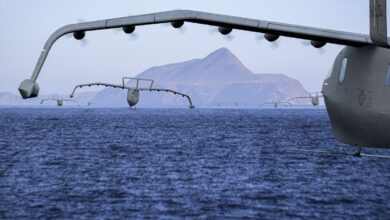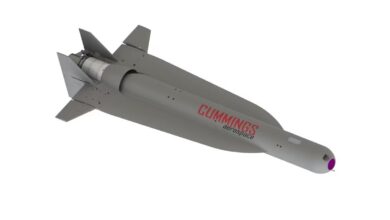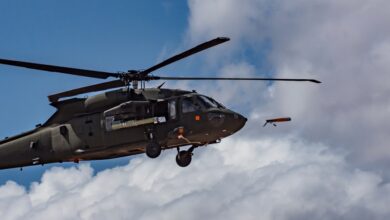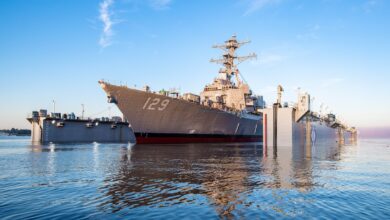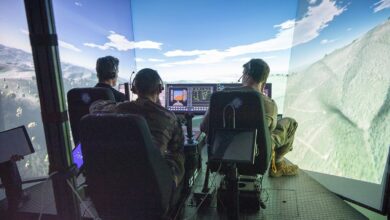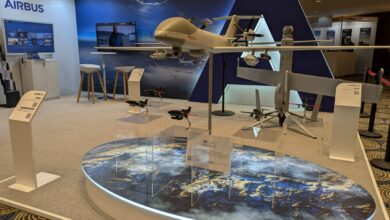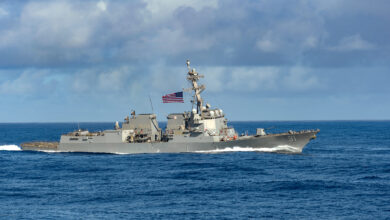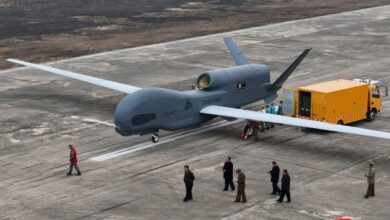Is the F-35 program a waste of money?
The F-35 Lightning II is an impressive 5th Generation fighter. Press releases on the platform have covered both the technological sophistication of the aircraft and the seemingly unimaginable expense of producing and maintaining the multirole fighter.
In a recent conversation with a colleague, I was amazed to hear that in his opinion, the cost represented an enormous waste of resources. His position was a surprise to me; however, it wasn’t without merit. In all fairness, the price tag is steep, and to date, the aircraft has had limited use in combat.
According to the manufacturer, Lockheed Martin, the current standard unit price for the F-35A variant, including aircraft, engine, and fee is $89.2 million. Other variations of the platform are even more expensive with the unit cost of the F- 35B at $115.5 million. Some estimates of the total cost for the program are as high as $1.508 trillion. It should be noted this estimate assumes a service life for the aircraft through 2070 and is represented in 2070 dollars. Even so, that is still a lot of money.
Research, Development, Test and Engineering totaled $55.1 billion. Procurement was a staggering $319.1 billion. Military Construction (MILCON) was an additional $4.8 billion. These figures represent a sizeable investment before the aircraft could even prove its worth.
The F-35 wasn’t employed in combat operations until May 2018 when the Israeli Air Force announced the use of the platform during two attack missions. Since then it has been used by the U.S., U.K., and Israel a handful of times in Iraq, Afghanistan, and in Syria, primarily against Islamic State targets, a reasonably limited record given the aircraft first flew in late 2006.
With all due respect to my colleague, I can see how the cost and limited use thus far could look like a massive waste of taxpayer dollars.
The reality is it’s too early to tell.
There are three key reasons I believe this to be the case. First, the F-35 will replace numerous older aircraft. Second, the capabilities of the F-35 far surpass current 4th Generation platforms. Finally, the estimated service life through 2070 leaves many years for possible combat use to occur.

The F-35, known as the Joint Strike Fighter, is designed to take on numerous roles in combat. The only other 5th Generation aircraft (F-22 Raptor) is designed for use primarily as a stealth air superiority fighter. Unlike the Raptor, the Lightning II is capable of multiple mission types. As a multirole fighter, the F-35 is designed to perform air-to-air combat, air-to-ground combat, and Intelligence, Surveillance, and Reconnaissance missions (ISR).
With an impressive list of combat roles in its design package, the platform can retire the A-10 Thunderbolt II, F-16 Fighting Falcon, F/A- 18 Super Hornet, and AV-8B Harrier, to name a few. The average age of these older aircraft in the U.S. military alone is 25 to 30 years. As aircraft get older, the cost to operate and maintain them begins to grow exponentially. Any discussion on the value of the F-35 program necessitates factoring in resources saved by retiring older aircraft. It is much more cost-effective to operate fewer types of aircraft. With fewer aircraft types, facilities can streamline operations, personnel requirements are less as the services no longer need people trained on various other platforms, and there are usually fewer suppliers involved. This fact alone makes the program more attractive from a financial standpoint.
Compared to 4th Generation aircraft such as the F/A-18 and F-16, the F-35 represents a massive technological leap. The use of Radar Absorbing Material gives the aircraft stealth capability. An Active Electronically Scanned Array (AESA) radar is far more capable than older platforms where the radar needs to be physically moved to scan the space in front of the aircraft. Embedded sensors and other design advances such as divertless inlets for hidden engines and internal weapons bays have many benefits.
When approaching enemy targets, for example, 4th Generation aircraft have a much larger radar signature as fuel tanks and weapons systems are external to the aircraft’s fuselage, and thus, they are easier to “see” and target. The F-35 is much harder to detect and is designed to engage enemy assets without ever being identified by anti-aircraft radar or weapon systems.
Different variants allow for the employment of the F-35 across all the armed services, with the U.S. Air Force using the conventional F-35A, Marine Corps employing the short takeoff and vertical landing capable F-35B and the Navy using the carrier-based version, the F-35C. Combined, these advanced features improve lethality and survivability.
Air dominance is much more attainable with this single platform than through the combination of the older aircraft in the fleet.

With a service life measured in decades, the F-35 is likely to see extensive combat use. Although the first flight of the platform was in 2006 that does not mean it was ready for service. It takes time to not only thoroughly test and develop the aircraft but also to train pilots.
It was not until July 2015 that the first squadron of F-35Bs was ready for deployment in the Marine Corps. The Navy didn’t have their F-35Cs prepared for deployment until February 2019.
Given this timeline, it is just too early to say the aircraft has not been utilized enough in combat. As the older platforms are phased out, the F-35 will become the standard. There are over 420 F-35s already in service worldwide. As this number grows, they will replace the current fleet.
It often seems like the resources dedicated to military programs are looked at as if they were programs in the ordinary business world. Many individuals look for a return on investment to materialize rapidly. The military is an organization which deserves study under a unique lens.
As Plato famously said, “only the dead have seen the end of war.” Conflict is a seemingly inevitable reality of our world. The F-35 will have plenty of opportunities to prove its worth. It is just too early to tell at this point whether or not that use will justify the cost over the next few decades.
 David Daly is a graduate of the United States Naval Academy and former United States Marine Corps officer. He currently is a consultant to the airspace industry and runs a commercial UAV company (Vigilante Drones) and a non-profit (Vigilante Cares) which uses drones to help military veterans with Post-Traumatic Stress Disorder (PTSD).
David Daly is a graduate of the United States Naval Academy and former United States Marine Corps officer. He currently is a consultant to the airspace industry and runs a commercial UAV company (Vigilante Drones) and a non-profit (Vigilante Cares) which uses drones to help military veterans with Post-Traumatic Stress Disorder (PTSD).
All views and opinions expressed in this article are those of the author, and do not necessarily reflect the opinions or positions of The Defense Post.
The Defense Post aims to publish a wide range of high-quality opinion and analysis from a diverse array of people – do you want to send us yours? Click here to submit an Op-Ed.



